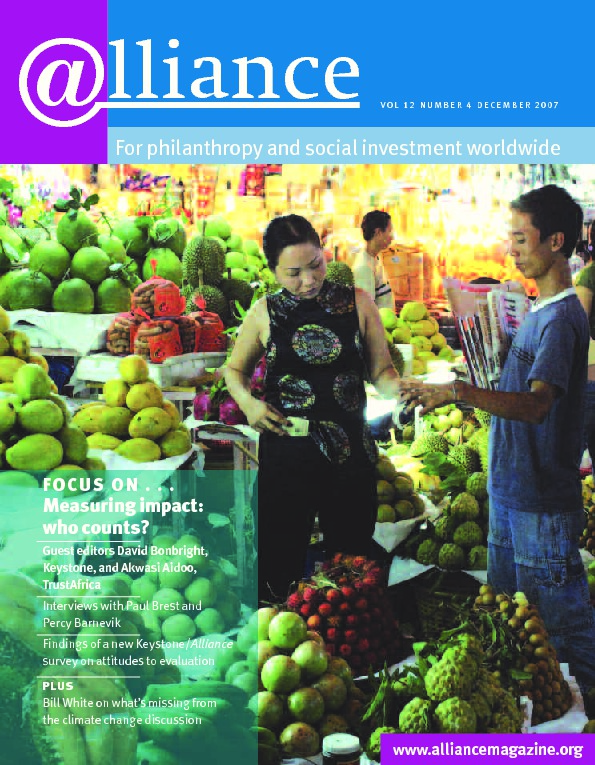 When one starts thinking about measuring impact, one seems inevitably to be pulled in two opposite directions. On the one hand, there’s the demand for ‘metrics’. This demand often comes from those working with donors, who are said to be looking for measures analogous to those available to people thinking to invest in the mainstream stock market.
When one starts thinking about measuring impact, one seems inevitably to be pulled in two opposite directions. On the one hand, there’s the demand for ‘metrics’. This demand often comes from those working with donors, who are said to be looking for measures analogous to those available to people thinking to invest in the mainstream stock market.
The claim made is that if we had better metrics, a functioning philanthropy marketplace, donors would be prepared to ‘invest’ more – the sort of claim that is often made by those promoting transparency and accountability. The image here is releasing a floodgate and funding for good causes flowing out.
On the other hand, you have the intractable phenomenon of social change, of the many and complex factors that are involved in transforming society, changing attitudes, tackling the underlying causes of poverty and inequity. This phenomenon seems obstinately to resist the sort of metrics that investors are said to want. Even if you can measure change over a period of time, it is near to impossible to say exactly what caused it – the much-cited problem of attribution.
The interview with Percy Barnevik reminds us how much can be achieved that is readily measurable – children passing exams, women taught to read and write, enterprises started, jobs created. Who is going to say this is not worth doing? Elsewhere in this issue, Paul Shoemaker cautions funders against seeking risk for the sake of it. ‘The clients served don’t care if a programme is cutting edge, revolutionary or “high risk”. They just want a better life.’
Subscribe now from only £45 a year!
This article is only available for our subscribers
Existing users can login here





